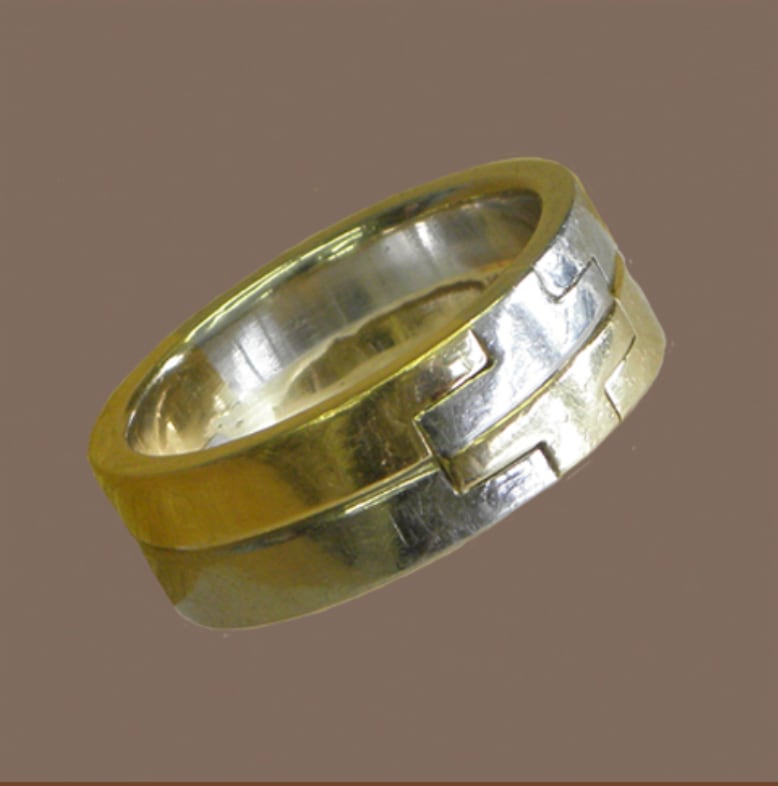-

これらの版画には、特別な手漉きの紙が欲しかったのです。1972年、私は福井県越前市の岩野市兵衛氏を紹介してもらい幸運でした。
彼の作品は素晴らしく、2000年に人間国宝に認定されました。このシリーズに使われている紙は、この名工によるもので、水とネリ(茨城県のトロロアオイと北海道のノリウツギの根から抽出した結合剤)で作られています。私は、版画に自然な縁取りの紙を作るために、70x49 cmの額縁を選びました。
私は、求めていた紙の適切な密度と吸収性を得るために、岩野市兵衛と何時間も作業しました。
さらに、各紙の右下に、私の名前「プティ」と私の日本名「富士筑新」の四角い印を 2 つ透かしで入れたいと思いました。
人間国宝が作った紙には、それだけで価値があります。
数週間後、私は岩野市兵衛師匠が作った比類のない紙を 1000 枚以上受け取り、誇りに思いました。
このユニークな紙を使って、顔のシリーズ「デイビットシリーズ」の製作を始めました。
デイビット王は聖書の中で非常に目立つので、組の 20 人の人物にふさわしい名前を見つける必要がありました。
私は聖書に戻って、聖書の名前を 20 個選びました。
The David Suite
For these prints I wanted very special handmade paper. In 1972 I was fortunate to be introduced to Iwano Ichibe from Echizen in Fukui prefecture. His production was so excellent that years later, in 2000 he was recognized as a Living National Treasure.
The paper used for the prints of this series by this master papermaker is made with water and neri, the binding agent extracted from the roots of tororoaoi from Ibaraki prefecture and noriutsugi from Hokkaido. I selected a frame 70x49 cm. to produce paper with natural borders for my prints.
I spent many hours working with Iwano Ichibe in order to obtain the proper density and absorbency of the paper I was looking for. In addition I wanted to insert two watermarks, at the bottom right of each sheet of paper, my name Peti and my japanese name in a square seal: Fuji Tchikushin. Such paper made by a Living National Treasure has a value by itself.
A few weeks later I was proud to receive over 1000 sheets of incomparable paper made by the master Iwano Ichibe. With this unique paper I started the series of faces, the David Suite. King David is so conspicious jn the Bible that I had to find appropriate names for the twenty figures of the suite. I went back to the Bible and I picked up twenty biblical names.
Gaston Petit
-
日本での最初の夏、漁師の集落で言葉と書道を勉強していた時、子供たちから「おふくろ」という言葉を学びました。
しかし、母親についてそれを言えるのは男性だけです。
数年後、辞書から私は別のことを学びました。
辞書には、「OFUKURO」は「Noble bag(高貴な袋)」と出ていました。
この事実は、私にとって大きなショックでした。
フランス人の男性は、たとえ高貴なものであっても、母親を「bag」と呼ぶことは決してありません。
鋭い心理的ショックで、私はかなり長い間、考えさせられました。
確かに、母の胎内は袋でした。そして、それは高貴なものでした。
それは私に命、愛、ケア、そして教育を与えてくれました。
何年にもわたって、日本人の男性が母親を「OFUKURO」と呼ぶことについて、頭から離れませんでした。
私は、他の素材や題材と組み合わせて、変形したり、切ったり、改変したり、変形させたりした、あらゆる種類のバッグやショッピングバッグを大量に集めました。
私はそれらを芸術作品にしました。
カジュアルな茶色の長方形の紙の買い物袋を何度も、時には女性の胴体として描いたこともあります。
このように、長い"OFUKURO"シリーズの制作は、何ヶ月もの間私と共に生き、今でも私にとって非常に特別な思い出です。
ガストン・プティ
My first summer in Japan was lived in a fishermen’s hamlet parcticing the language and calligraphy, There I learned the word OFUKURO from children, which means ‘mother’. But only a boy could say it about his mother.
Several years later, the characters in the dictionary revealed something else to me.
The characters say ‘Noble bag’. This revelation was a big shock to me. Never, under any circumstances, would a French-speaking boy refer to his mother as a sac, even a noble one.
A psychological shock that made me think. It's true, my mother's belly is a bag.
And it's noble. It gave me life, love and education.
Over the years, OFUKUR0 took hold of me.
I collected a quantity of bags, shopping bags of all kinds that I often transformed, cut up, altered or deformed, associated with other materials or subjects.
I made works of art out of them.
I even painted the ordinary brown paper shopping bag several times, sometimes like a woman's torso.
Thus the long series of OFUKUR0 lived with me for many months and still remains very special to me.
Gaston Petit
-

私は日本に来て間もなく、比田井南谷のもとで書道を学び始めました。
この巨匠は、1945年に「抽象」書を制作し、展示した最初の書家です。
彼の指導のもと、私は古い中国の文体と日本の古典文字を学び、抽象的な書道の作り方を学びました。書道の仕事をしている中で気づいた2つの重要な点。
西洋美術では、画家にとってキャンバスの白はネガティブまたはニュートラルとして捉えられますが、それは完全に色で覆われていなければなりません。
書道では、紙のむき出しの白はポジティブです。インクは、陰と陽の適切なバランスを作り出すための補完物として提供されます。そして2つ目は、伝統的に床で作業するのに対し、書道家は紙の上から始めて、自分に向かって垂直に作業することです。
キャンバスや壁、イーゼルで作業するときとは視野角が違います。
これに付け加えると、書家は一筆書きで、インスピレーションにあふれ、途切れることのない動きで書く。
修正は不可能です。ガストン・プティ 1962年
I started to study calligraphy soon after my arrival in Japan under Nankoku Hidai.
This master was the first calligrapher to make and exhibit ’abstract’ calligraphy in 1945.
Under his tutoring I studied old chinese styles as well as classical japanese characters, and learned how to create abstract calligraphy.
Two important aspects I came to realize while working calligraphy.
While in western art the white of the canvas for the painter is taken more as negative or neutral, it has to be entirely covered with colors.
In calligraphy the bare white of the paper is positive.
The ink comes as a complement to create the proper balance, the yin and the yang !
Then the second aspect is that while working traditionally on the floor, the calligrapher starts at the top of the paper, working vertically towards himself.
The angle of vision is different from when working on a canvas on a wall or on an easel.
To which I may add that the calligrapher writes in one stroke, in an inspired, uninterrupted movement.
There is no rectification possible.
Gaston Petit 1962

